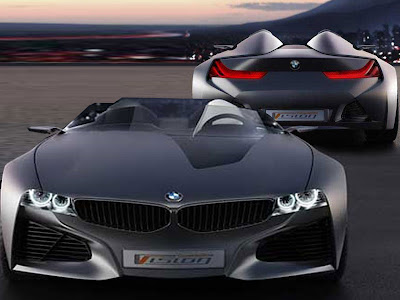2011 Nissan Electric Sports Cars ESFLOW Concept
The ESFLOW concept cars will be unveiled at the 2011 Geneva Motor Show (3-13 March) where it will share the Nissan stand with a number of other innovative and exciting newcomers - but with one major difference: these are production ready.
The 2011 Nissan Electric Sports Cars ESFLOW Concept isn’t scheduled to be unveiled until the 2011 Geneva Motor Show in just a couple of weeks. Nissan plans to reveal its new electric concept, called Esflow, at the Chicago Auto Show this year. The car will make its world debut at the 2011 Geneva Motor Show from March.

2011 Nissan Electric Sports Cars ESFLOW Concept
Nissan has a reputation for creating some of the most exhilarating sports cars on the market. Nissan has also developed the world's first practical Zero Emission family car, the Nissan LEAF. Now Nissan has put that expertise together. It has captured the excitement of a sports car and the environmental benefits of an electric vehicle and blended them into one dramatic two-seater concept: ESFLOW.
It may be a concept, but the Nissan ESFLOW electric sports cars proves it's possible to remain environmentally sympathetic without having to give up the joy of driving. It looks like a sports car, handles like a sports car and performs like one too. But Nissan ESFLOW Concept cars is different to every other sports car yet built: it's electric. Using technology pioneered in the award-winning Nissan LEAF, the EV concept shows that driving can still be as much fun tomorrow as it is today.

2011 Nissan Electric Sports Cars ESFLOW Concept
Ecological minimalism need not come at the expense of luxury. The cabin of the 2011 Nissan Electric Sports Cars ESFLOW Concept is clean and open and weight saving has been a priority throughout its design, but it is still a comfortable and pleasant place to sit. By far the heaviest components in modern cars' interiors are the steel framed, thickly upholstered and increasingly motorized seats. In 2011 Nissan Electric Sports Cars ESFLOW Concept the seats are sculpted into the rear bulkhead of the car, negating the need for a heavy frame. This of course means that they are immobile, but this is of no consequence as the fly-by-wire steering and pedals adjust electrically to the best spot to suit each individual driver's size and preferred driving position.
Nissan ESFLOW Concept is rear-wheel drive and it runs on two motors. The car's graceful proportions allow the twin electric motors to be placed above the axis of the rear wheels, in a mid-ship position,. These motors independently control the left and right wheels, and so the torque is optimized to ensure outstanding vehicle stability and control as well as efficient power regeneration. The motors produce enough torque in an instant for it to reach a 100kph in under 5 seconds.

2011 Nissan Electric Sports Cars ESFLOW Concept
Power for the motors comes from the same laminated lithium-ion battery packs used in the Nissan LEAF, but in ESFLOW the packs are located along the axis of the front and rear wheels. This centralizes the mass of the car, and thus its rotation point, close to the driver's hips. These cleverly positioned batteries enable the car to travel over 240km on one charge.
2011 Nissan Electric Sports Cars ESFLOW Concept
The colors of this Esflow are inspired from glaciers, with highly reflective blue-tinted solidified liquid shapes. Even if this concept will not hit the production line too soon, it could be a great source of inspiration for Nissan’s future sports cars.








 2010 Nissan Sports Cars GT-R by Tommy Kaira
2010 Nissan Sports Cars GT-R by Tommy Kaira
 The 2010 Nissan Sports Cars GT-R by Tommy Kaira full kit consists of, among others, a wet carbon front bumper, a front grille cover, lip spoiler, under diffuser, side ducts and side skirts. The rear also features wet carbon in the form of a racing diffuser, a rear wing and rear fender extensions. The AVS Model F15 Platinum black wheels are shod with Pirelli P-Zero 255/40R20 and 285/35R20 front and rear tyres respectively.
The 2010 Nissan Sports Cars GT-R by Tommy Kaira full kit consists of, among others, a wet carbon front bumper, a front grille cover, lip spoiler, under diffuser, side ducts and side skirts. The rear also features wet carbon in the form of a racing diffuser, a rear wing and rear fender extensions. The AVS Model F15 Platinum black wheels are shod with Pirelli P-Zero 255/40R20 and 285/35R20 front and rear tyres respectively. 2010 Nissan Sports Cars GT-R by Tommy Kaira
2010 Nissan Sports Cars GT-R by Tommy Kaira



































